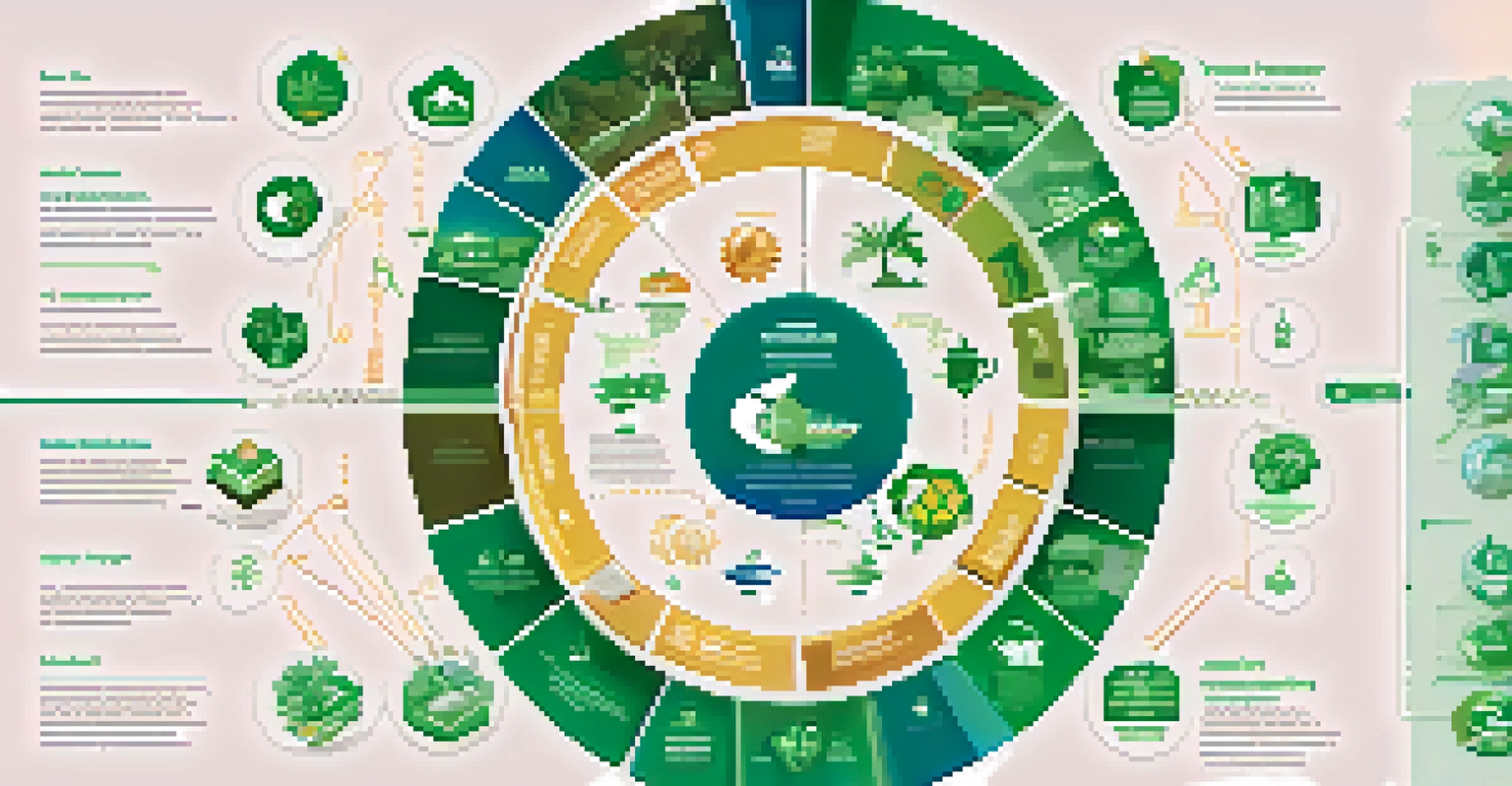Mining Regulations: Balancing Growth and Environmental Impact

Understanding the Importance of Mining Regulations
Mining regulations are essential for ensuring that the extraction of natural resources is conducted responsibly. They serve to protect the environment, safeguard public health, and promote sustainable practices within the industry. Without these regulations, mining operations could lead to significant ecological damage, impacting wildlife and local communities.
The greatest threat to our planet is the belief that someone else will save it.
Moreover, these rules help to establish a framework for accountability among mining companies. This means that companies are held responsible for their actions, which can include restoring the land after mining activities are completed. By enforcing strict guidelines, regulators can help ensure that mining activities do not come at the cost of our planet's health.
In essence, mining regulations act as a balance, allowing for economic growth while simultaneously protecting the environment. They are crucial for fostering a sustainable approach to resource extraction that benefits both the economy and the ecosystem.
The Economic Benefits of Mining Regulations
While it may seem counterintuitive, regulations can actually promote economic growth in the mining sector. By establishing clear guidelines, they create a level playing field for companies, encouraging fair competition and innovation. This can lead to the development of new technologies and methods that increase efficiency and productivity.

Additionally, proper regulations can attract investment from companies that prioritize sustainable practices. Investors are increasingly looking for projects that align with their values, and robust regulations can signal a commitment to responsible mining. This can lead to increased funding, job creation, and economic development in mining areas.
Mining Regulations Protect Resources
Mining regulations are essential for safeguarding the environment, public health, and promoting sustainable industry practices.
Ultimately, when regulations are designed well, they can create a win-win situation: fostering economic growth while ensuring that environmental considerations are taken into account. This balanced approach can contribute to a thriving mining industry that benefits both people and the planet.
Environmental Impact of Mining Activities
Mining activities can have significant environmental repercussions if not managed properly. Deforestation, soil erosion, and water pollution are just a few of the potential impacts that can arise from mining operations. These environmental issues can have long-lasting effects on local ecosystems and communities, highlighting the need for effective regulations.
Sustainability is no longer about doing less harm. It’s about doing more good.
For instance, when mining companies do not adhere to regulations, they may inadvertently contaminate water supplies with harmful chemicals used in the extraction process. This can jeopardize not only wildlife but also the health of nearby residents who rely on those water sources. Therefore, having strict regulations in place is vital for mitigating these kinds of risks.
Furthermore, regulations can promote the use of environmentally-friendly mining practices, such as the restoration of habitats after mining concludes. By requiring companies to take responsibility for their environmental footprint, regulations can help ensure that mining activities leave a minimal impact on the planet.
Challenges in Implementing Mining Regulations
Implementing effective mining regulations isn't without its challenges. One of the primary obstacles is the balancing act between economic interests and environmental protection. Stakeholders, including local communities and mining companies, often have competing priorities, which can complicate the regulatory process.
Additionally, enforcement of regulations can be tricky, especially in regions with limited resources or oversight. In some cases, companies may find ways to circumvent regulations, leading to non-compliance and potential environmental harm. This highlights the importance of having robust monitoring systems in place to ensure adherence to regulations.
Regulations Foster Economic Growth
Well-designed mining regulations can encourage fair competition and attract investment by prioritizing sustainable practices.
Moreover, the mining industry is constantly evolving, with new technologies and methods emerging regularly. Regulators must stay ahead of these changes to adapt existing regulations accordingly, ensuring they remain relevant and effective in mitigating environmental impacts.
The Role of Stakeholders in Mining Regulation
Stakeholders play a crucial role in shaping mining regulations and ensuring their effectiveness. This includes governments, local communities, environmental groups, and mining companies themselves. By collaborating and engaging in dialogue, these parties can contribute valuable insights that lead to more sustainable mining practices.
For instance, local communities often possess knowledge about the land and its resources that can inform better regulatory decisions. Their input can help regulators understand the potential impacts of mining activities and advocate for measures that protect their environment and livelihoods.
Additionally, mining companies can be proactive in promoting sustainable practices by working alongside regulators and stakeholders. By adopting a cooperative approach, they can help create regulations that not only protect the environment but also support business innovation and growth.
Case Studies: Successful Mining Regulation Examples
Several countries have successfully implemented mining regulations that balance economic growth with environmental protection. For example, Canada has developed a comprehensive framework that involves multiple stakeholders, ensuring that mining projects undergo rigorous assessments before approval. This has led to a more sustainable mining industry that respects both the economy and the environment.
Another notable example is Australia, where regulations require mining companies to rehabilitate land after extraction. This practice not only restores ecosystems but also fosters community trust and support for mining operations. By showcasing successful case studies, other regions can learn valuable lessons about effective mining regulation.
Stakeholder Collaboration is Key
Engagement among stakeholders, including local communities and mining companies, is crucial for creating effective and sustainable mining regulations.
These examples illustrate that with thoughtful regulation and collaboration among stakeholders, it is possible to achieve a harmonious balance between mining activities and environmental conservation.
The Future of Mining Regulations and Sustainability
As the world continues to grapple with environmental challenges, the future of mining regulations will likely focus more on sustainability. This includes integrating new technologies that minimize environmental impact and promote resource efficiency. Innovations such as automated drilling and waste recycling are gaining traction and can significantly reduce the ecological footprint of mining.
Moreover, there is a growing emphasis on the circular economy, where mining companies are encouraged to recycle materials and reduce waste. Regulations that facilitate this shift can help ensure that mining contributes to a more sustainable future rather than depleting natural resources.

Ultimately, the evolution of mining regulations will play a pivotal role in shaping the industry's future. By prioritizing sustainability and responsible practices, we can protect our planet while still harnessing the economic benefits that mining provides.